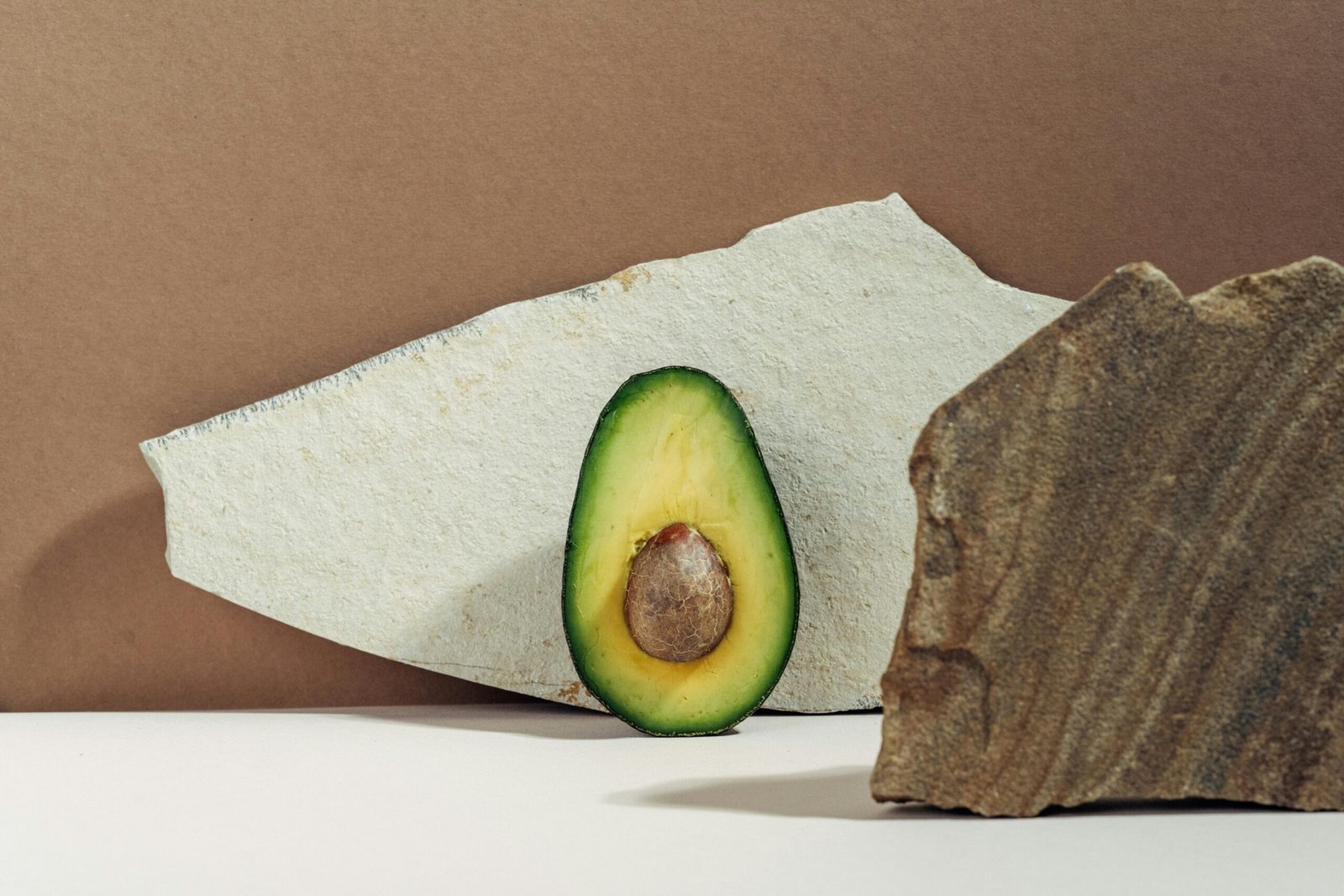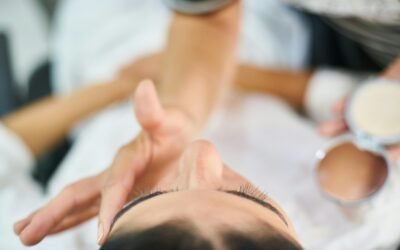One of the biggest mistakes we’ve made over the past few years in nutrition is demonising fats. I know, I know, we’ve all been trained to think that fats are the enemy, but that’s not the full story. In fact, the right fats are actually your skin’s best friend, especially when it comes to clearing acne and building a healthy skin barrier. Keep reading, and you’ll not only learn how omega-3 can help clear acne, you’ll be an expert on all thing fats!
Fats: The Good & The Bad
We’re going to be zooming in on omega-3 specifically. But, fats in general are so key for skin health. This is because including fats in our diet helps us absorb fat-soluble nutrients such as vitamin A & E, which are so important for healthy skin! Healthy fats also create a healthy, moisturised skin barrier, help to balance hormones and reduce inflammation in the skin. But before we get into the specific magic of omega-3s, let’s break down the different kinds of fats so we know what we’re dealing with.
1. Saturated Fats
Think of these as the solid guys—literally, because they’re solid at room temperature. I always remember it as Saturated = Solid (match the s). You’ll find them in foods like butter, cheese, ghee, coconut oil, and red meat. Saturated fats can be beneficial for us. Our bodies do need saturated fats to function properly, but too much of them (without a balance of good fats) can lead to inflammation, raised cholesterol levels and other imbalances in the body, which is bad news for your skin.
2. Unsaturated Fats
These are the superheroes of the fat world, coming in two types: monounsaturated and polyunsaturated fats. These guys are packed with anti-inflammatory properties and are fantastic for skin health. Think olives, olive oil, avocados, nuts, seeds, and fatty fish like salmon, mackerel, and sardines. You want to try and get these in your diet as much as possible.
3. Trans Fats
These are the ones you want to try and reduce as much as possible. Very small amounts of trans fats can be found in some foods, like meat. However, a lot of trans fats are artificially created by hydrogenation. A food product containing hydrogenated fats should have it listed on the food label, as they don’t really provide us any health benefits at all. They’ve been linked to a whole list of health issues, including—you guessed it—inflammation. And inflammation = acne.
Essential Fatty Acids: Why your skin needs them
Now, let’s get to the good stuff—essential fatty acids (EFAs), specifically omega-3s and omega-6s. Our bodies can’t produce these on their own, so we have to get them from our diet, that’s why they’re called essential. There are different types of omega-3, and this is important to know if we’re trying to reduce inflammation in the skin.
Omega-3: Your Skin’s Best Friend
Omega-3 fatty acids are game-changers when it comes to keeping your skin clear and glowing. They help reduce redness and swelling, keep your skin hydrated, regulate oil production, balance hormones, and even help manage blood sugar levels—all key factors in preventing breakouts. You can find them in oily fish (like salmon, mackerel, and sardines), walnuts, flaxseeds, chia seeds, olives, and avocados.
The truth about plant sources of omega-3
We’re going a bit deeper into the science now. But this is essential to understand when using healthy fats to clear acne. There are three primary forms of omega-3 that we get from food, and they are Alpha-Linolenic Acid (ALA), Eicosapentaenoic Acid (EPA) and Docosahexaenoic Acid (DHA).
- Alpha-Linolenic Acid (ALA) is a plant-based omega-3 fatty acid and the most common type found in vegan sources like flaxseeds, chia seeds, and walnuts. Our bodies can convert ALA into the longer-chain omega-3 fatty acids EPA and DHA, but the conversion process is limited and not very efficient. As a result, only a small percentage of ALA gets converted into EPA and DHA.
- Eicosapentaenoic Acid (EPA) is a long-chain omega-3 fatty acid primarily found in fatty fish, algae, and fish oil supplements. It is a potent anti-inflammatory agent and plays a crucial role in various bodily processes such as brain function, mood, cardiovascular health and skin health.
- Docosahexaenoic Acid (DHA) is another long-chain omega-3 fatty acid present in fatty fish, algae, and fish oil supplements. It is essential for proper brain function, eye health, and also helps to reduce inflammation.
So, suppose you’re following a plant-based diet or allergic to fish, or maybe you don’t like the taste; you can see how it can make it difficult to get enough EPA & DHA intake from food alone – you’ll be relying on 1) Eating enough ALA sources of food, and 2) Hoping that your body is a good converter of ALA to DHA & EPA – but unfortunately even if you’re good at converting, on average only around 7-11% of ALA actually makes it to EPA, and even less to DHA. This is where supplementation is needed.
Omega-6s: The Double-Edged Sword
Omega-6s are also essential, but—too much of them can tip the healthy balance of omega’s. And guess what? The modern Western diet is packed with omega-6s from vegetable oils, processed foods, and snacks. And we’re not eating enough omega-3 from the sources I listed above.
Balancing Your Omega-3 to Omega-6 Ratio
Ideally, you want a ratio of around 5:1 and below (omega-6 to omega-3). But because of all the processed foods we eat today, most people are at 10:1 or higher—way out of balance! Which may increase inflammation, which could mean more acne, and more skin issues.
So, what’s the solution? Up your omega-3 intake!
But What If You’re Not Absorbing Healthy Fats Properly?
Here’s something most people don’t think about—just because you’re eating omega-3-rich foods doesn’t mean your body is absorbing them properly. If your digestion isn’t working well, you might not be getting the full benefits of these amazing fats.
Some common reasons for poor fat absorption include:
- Poor gut health or leaky gut
- Low bile production (bile helps break down fats)
- Imbalanced gut bacteria
- Removal of the gallbladder
- Liver imbalances
- Issues with the pancreas (which helps digest fats)
So, how do you check if your body is actually absorbing omega-3s?
1. Stool Tests
A stool test can check how well your body is digesting fats. If you’re not breaking them down properly, it could mean your body isn’t absorbing omega-3s efficiently. This can help pinpoint any digestive issues that might be stopping you from getting the benefits of these healthy fats.
2. Blood Tests
A blood test can actually measure the levels of omega-3 in your body. It helps determine whether you have an omega-3 deficiency and shows the ratio of omega-6 to omega-3 in your system. If the numbers are off, you can tweak your diet or take a high-quality omega-3 supplement to correct it.
Signs You Might Need More Omega-3s
Still not sure if you’re getting enough omega-3s? Here are some signs:
- Dry, flaky skin
- Dry eyes
- Brittle hair or hair loss
- Joint pain
- Low mood or brain fog
- Constipation
If you’re dealing with any of these, it might be time to increase your omega-3 intake and check if you’re actually absorbing it properly.
How to Get More Omega-3s in Your Diet
- Eat More Fatty Fish – Salmon, mackerel, sardines, and anchovies are amazing sources.
- Add Nuts and Seeds – Walnuts, flaxseeds, and chia seeds are great plant-based options.
- Use Healthy Oils – Extra virgin olive oil is my go-to on salads for an omega boost. But organic, cold-pressed rapeseed oil will also give you a good dose of omega-3. The quality of the oils are important here!
- Try Omega-3 Supplements – A high-quality fish oil or algae-based supplement can help if you’re not getting enough from food.
Can omega-3 help clear acne?
Yes, it can. Omega-3s are one of the best things you can add to your diet for clearer, healthier skin. But remember, it’s not just about eating the right foods—you need to make sure your body is actually absorbing these essential fats. Testing your digestion and omega-3 levels can help you fine-tune your diet and supplements so you’re getting the most out of them.
If you’re struggling with stubborn acne and feel like you’ve tried everything, it might be time to take a closer look at your omega-3 levels. Your skin (and your body) will thank you!





0 Comments